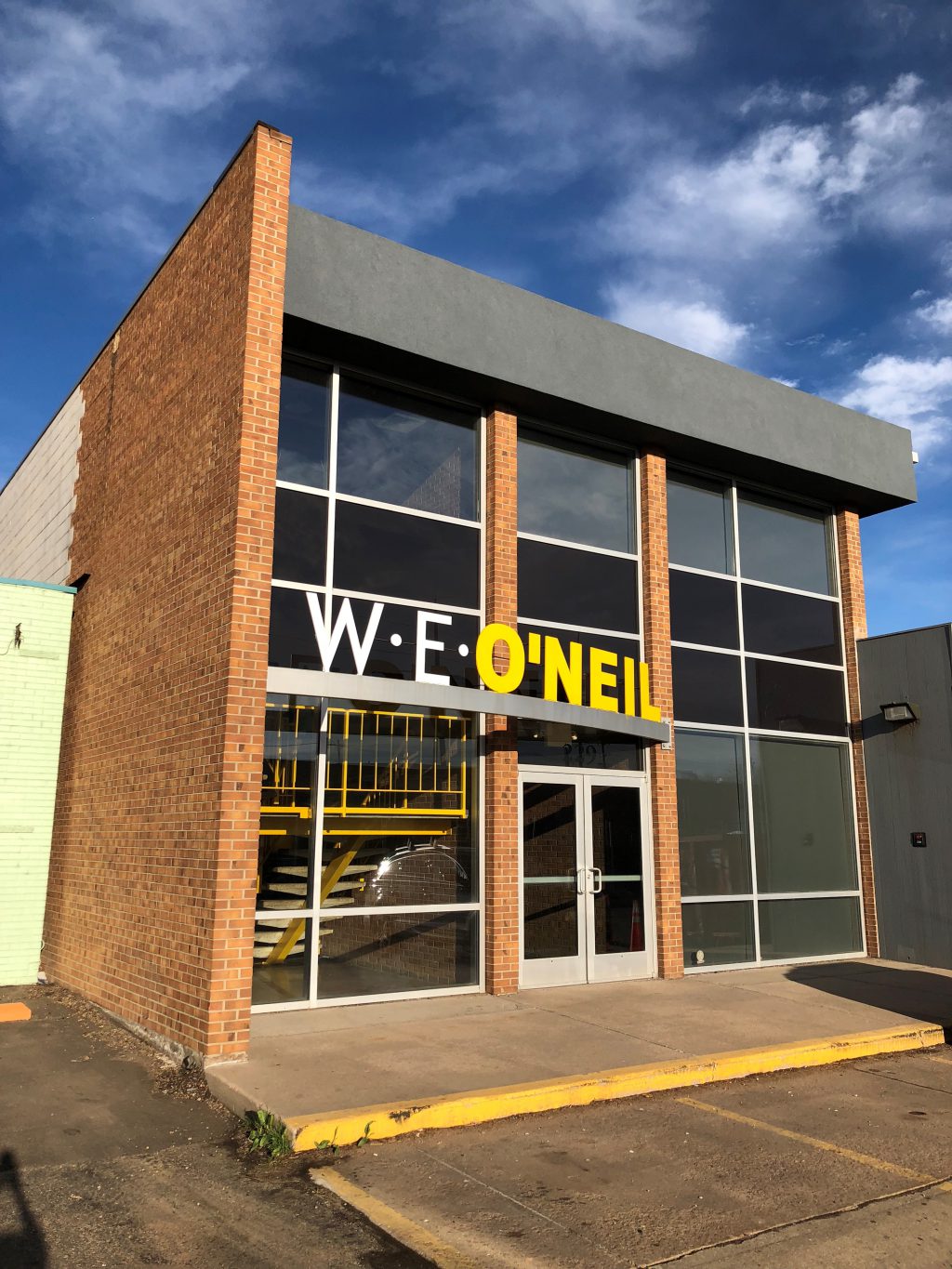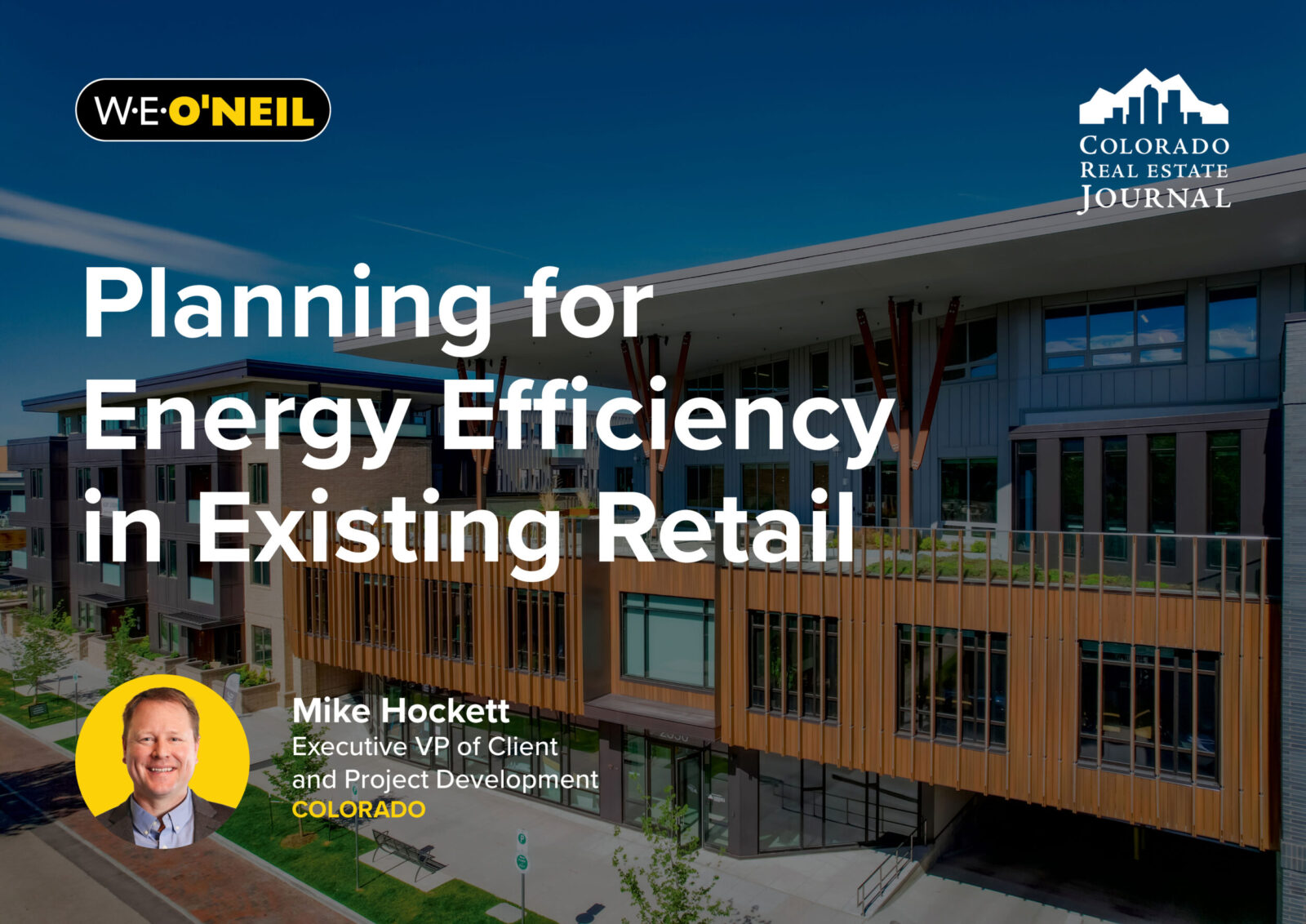
C-PACE program finds favor with property owners, investors
Our Industry
Colorado Real Estate Journal tapped Mike Hockett to share his insights on how to transform existing retail into energy-efficient spaces.

The retail industry has been undergoing significant changes for years, including shifts in shopping habits and a heightened focus on sustainability. As energy efficiency becomes a key concern for large retail tenants and customers, the challenge for existing retail assets lies in meeting stricter, more complex regulatory standards. Mike Hockett explores how collaboration with energy experts, engineers, and contractors is crucial to navigating these changes.
In the Energy Efficiency section of the recently published Colorado Real Estate Journal, Mike shares his insights on how to transform existing retail spaces into energy-efficient spaces in his Planning for energy efficiency in existing retail.
Here are the key insights worth noting in Mike’s article:
Industry Shift Towards Sustainability. In recent years, the focus on sustainability has intensified, driven by evolving stakeholder values and stricter regulatory mandates. Large retail tenants are increasingly prioritizing energy-efficient solutions to align with their corporate sustainability goals.
Collaborative Approach. Enhancing energy efficiency in retail necessitates a collaborative effort among energy experts, engineers, and contractors. Programs like Energize Denver provide phased compliance options, enabling retailers to strategically plan and implement necessary upgrades over time.
Financial Incentives: Government and utility providers offer financial incentives, such as rebates, to support energy upgrades. The Commercial Property Assessed Clean Energy (C-PACE) program in Colorado stands out as a significant financing tool, helping to make these improvements more accessible and cost-effective.
Going all-electric will increase power demands, but it will also increase overall efficiency. The upfront costs are high because these systems involve upgrades that require engineering and managing long lead times with new electrical gear and equipment.
Mike Hockett
Executive VP, Client and Project Development
CREJ, May 2024
Witnessing trends in the construction industry and drawing on his 22 years of experience, Mike provided valuable insights on implementing energy-efficient strategies, addressing their corresponding challenges, and highlighting their sustainable benefits.
Building Envelope Improvements. One of the most cost-effective ways to improve a building’s energy performance is to enhance the building envelope’s performance. Building envelope refers to the outer shell separating the indoor and outdoor environments, including walls, roofs, windows, and doors. Upgrading the building envelope can improve energy efficiency, comfort, and indoor air quality. Successful strategies can include:
Transitioning to all-electric. Electric vehicles have revolutionized the automobile industry, and similar electric sustainability solutions in building construction can help owners achieve corporate and regulatory goals. Although going all-electric increases power demands and upfront costs, it enhances overall efficiency. A phased approach to these upgrades can optimize investment returns while spreading costs over time.
Implementing energy-efficient strategies is essential for retail assets aiming to attract sustainability-focused retailers, comply with regulations, and reduce environmental impact. While challenges exist, a phased approach and expert collaboration can help overcome these hurdles, ultimately enhancing building performance and value.
Read Mike’s full article in the Colorado Real Estate Journal, May 2024 issue here.